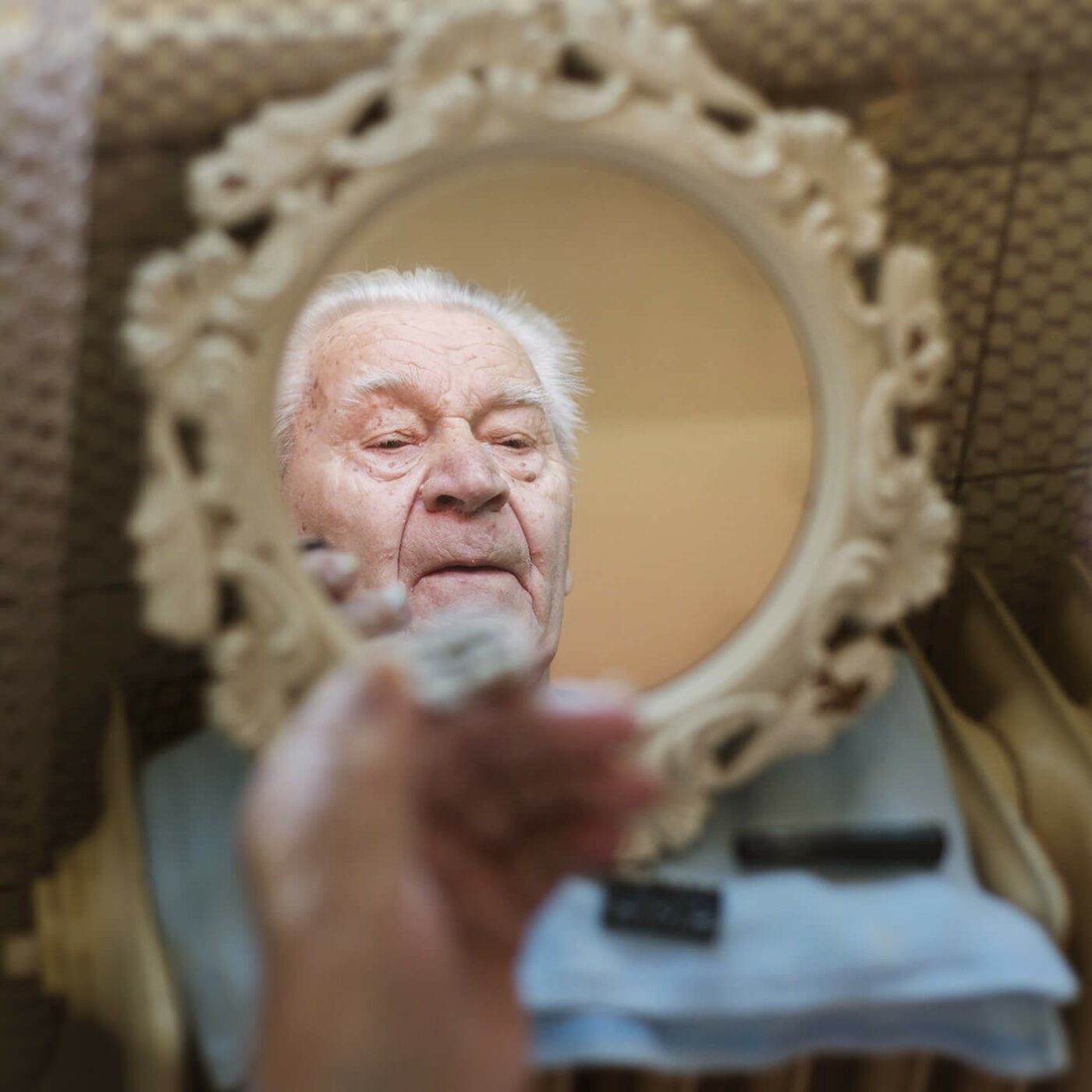Bath aids for elderly – finding the right solution for your needs

Getting in and out of a bath tub or moving around the bathroom safely can become difficult as we get older. Limited mobility, poor balance and weaker muscles and bones – combined with wet and slippery surfaces can be a recipe for accidents. Unfortunately, some older people see the use of bathroom aids as a loss of independence, however they actually increase it – helping them to continue to manage their own personal hygiene.
In this guide we’ll look at a range of bathroom adaptations and bath aids – from non-slip mats and shower stools to bath lifts – and how you can get them.
What is a bathing aid?
In the simplest terms a bath aids make showering and bathing safer for older and disabled people. There is a wide range of options available, designed to provide physical support and make daily washing easier.
As we get older our bathrooms may no longer meet our needs – and could make accidents more likely, especially if it’s been sometime since a bathroom has been renovated. Some older style baths may be a lot deeper than today’s standard, especially freestanding baths. Old glass shower screens could also cause injury if fallen on, as they may not be made of tempered safety glass – breaking into large shards on impact.
Being able to keep up with personal hygiene is a huge part of independent living, and yet a 2023 study found around 550,000 people over the age of 65 seek medical attention each year after injuring themselves in the bathroom. From small aids such as grab bars and shower seats, to large equipment like a walk in bath tub – bathing aids can play a huge role in reducing accidents and boosting confidence for older people and their families alike.
This article looks at aids that support washing and bathing – for further tips on how to make bathrooms and toileting safer, take a look at our complete guide to bathroom safety.
How dangerous is the bathroom for an elderly person?
The bathroom is the 4th most dangerous room in the home, according to research by the National Accident Helpline. Around 80% of all bathroom accidents involve falls, with the majority occurring near showers, bath tubs, or toilets.
Types of bath aids
There’s a huge variety of bathing aids available, so much so, that it can be difficult to know what you need, how much you can expect to pay, and how easy it will be to install and use. We’ve talk you thorough them now.
Bathroom safety products
Small, essential aids that can support a safer bathing routine
Bath pillows
A bath pillow can help provide a more comfortable bathing experience for those with chronic pain, pressure sores, or who just find sitting in a hard bath difficult. There are a variety of bath pillows available, Some are integrated with a bath mat measuring the full length of the bath to provide non-slip support alongside back and neck padding. Another more traditional option is a smaller padded or inflatable cushion users can sit on, which fixes securely to the bottom of the bath with suction cups.
And, if you like a long soak in the bath and it’s safe to do so, you may find a neck cushion useful. These attach to the slanted end of the bath to cradle the head when the user leans back.
Bath pillows are fairly inexpensive, you can usually pick one up for between £10-£30.
Long-handled brush or sponge
If you have limited mobility in your arms or shoulders a long handled sponge or bath brush may help you wash without the need for assistance.
These disabled washing aids are designed to make it easier to reach the back, legs, and feet and usually feature an easy grip handle. When choosing a brush, be sure to check the firmness of the bristles. Older skin is delicate so you’ll need bristles that are firm enough to clean properly, but not so firm that they scratch or irritate the skin.
Most sponges and brushes can be found for a few pounds.
Safety plug
Have you ever forgotten you’re running a bath and caught it in the nick of time? Safety plugs are helpful devices to prevent bathroom floods. They’re weight activated – meaning that when the bath fills with a certain volume of water a pressure plate in the plug opens and releases the water safely down the plughole. Some plugs also come with a heat sensor too – changing colour if the bath water becomes dangerously hot. The great news is you should be able to find one for just under £10.
Grab rails
Grab bars and rails can help those who struggle with strength and balance to lift or lower themselves. They can offer additional support when standing, for example in the shower or at the sink – reducing the risk of fall related injuries. They come in a wide range of lengths, colours and styles and many have textured grip handles to help ensure your loved one can get a secure grip even if the rail is wet.
The most common grab bars attached to the wall, so you may need a handy man to help drill into walls and tiles to ensure they are properly secured. You can also get grab bars that fit directly to the side of the bath using a clamp, meaning no tools are required. Some bars attach with suction cups, however be wary that anything not fixed into the wall could pose a risk of failing when needed.
Grab rails can cost anywhere between a few pounds to a few hundred pounds, depending on it’s function and design.
Non-slip matting
A non-slip mat is an essential item in any bathroom as wet floor can pose a danger to anyone. For those who struggle with balance and coordination, or who have a history of falls, the risk of injury can be a real worry and may prevent them from washing in the first place.
There are many types of mat you can try. Some use rubber suction pads to fix to the bottom of the bath tub – creating a safer surface to stand on when getting in and out the bath. You can also get textured strips that you can apply to the bottom of the bath to reduce the risk of slips.
Non-slip surfaces are just as important outside of the bath. You can also get large rubber or absorbent mats for the bathroom floor, which can minimise the risk of slipping when transferring from the bath, making the bathroom safer as you dry and get dressed.

Dressing and cast protectors
A relaxing bath is a far less enjoyable experience if you’re preoccupied with keeping a wound dressing dry. If moisture gets trapped in these dressings it can lead to skin irritation and even infection. A dressing or cast protector is a waterproof covering, usually with a watertight rubber seal that is designed to keep water off a dressing when showering or bathing.
Bath boards & bath seats
A bath seat or bath board fits over the width of the bath tub to provide a raised platform for you to sit on comfortably. Many models are height adjustable, and can dramatically reduce the distance you need to lower yourself into the bath water. They’re especially useful if you struggle with balance, or lack the upper body strength needed to push yourself up from the bath. a few common types of bath board or seats include –
Transfer benches – these bath benches sit outside the bath and make it easier to get over the threshold of the bath tub.
Bath stools / bath chairs with backrests – these sit inside the bath, and eliminate the need for a person to fully lower themselves into the bath. They are usually made from hardwearing plastic with drainage holes. Bath stools are often used alongside transfer bathing benches
Bath steps
Usually made from plastic or metal, bath steps can reduce the distance you need to lift your legs to get into the bath. They’re popular with elderly users with limited movement in their knees or hips, such as those living with arthritis. There’s a range of bath steps available, and many can be used for other tasks around the home too, such as getting in and out of a high bed.
If it’s getting more difficult to lift your arms to wash your hair or hold a shower head, a specially designed tray can be a perfect solution – providing a rest for your head and neck and diverting flowing water while someone assists you.
Bathroom mobility equipment
Larger aids to support safer movement in and out of the bath
Lifts are a common bathroom mobility aid that can help older and disabled individuals to move freely between the bathroom and the bath tub, and can provide support while you’re in the bath for confident washing and a comfortable bathing experience. There are a range of bath lifts to chose from. When choosing a lift, it’s important to consider the weight capacity, and whether you’d like a lap harness or belt for additional security when the lift is moving.
Inflatable moving bath lift – This type of lift is a trickier to find, and work much in the same way as traditional chair style lifts. However rather than lowering you into the bath using a motor, the inflatable bath cushion will slowly deflate, and then re-inflate when it’s time to get out.
Fixed band – If you like to have a long soak in the bath, this may be the lift for you. to use this lift, you position yourself in a large fabric band, kind of like a sling, that’s fixed to a unit on the wall. This lowers you to the bottom of the bath, and because there’s no chair behind you, you’re free to lie down and relax. However, this type is only recommended for people with the core strength to support themselves in the sling.
This is a more expensive options but can be the cornerstone of an accessible bathroom. They can provide greater independence for people with strength or balance issues who would find it really difficult to step up into a bath.
They feature high sides that include a watertight door over a low threshold. The door can be opened and closed before the bath is filled with water, allowing people with mobility issues to walk in rather than step over the side of a traditional tub. It will hold the water in the tub, and once the tub is drained, the door can be opened, so the user can step out easily. Some models also have built-in seats removing the need for an additional bath stool.
While they do make using a bath safer, there are some downsides, the biggest is they can take a long time to fill and drain, and the user will need to sit and stay in the bath tub while this happens.
Shower assistance equipment
A range of shower aids specially designed for walk-in showers
If you have an in-built shower in your home this is likely to me more accessible than a standard bath. However, any wet surface can be a danger to elderly or disabled users so it’s still important to use the right shower safety aids.
A non-slip mat on the shower tray is an essential addition, as are secure floor mats in front of the shower to prevent slips when getting out.
Shower seat
If you find it difficult to stand for a prolonged time a shower chair or stool can offer extra stability during showers. Look for a chair that has drainage holes to prevent water pooling and the risk of injury when you stand up. Most shower stools come in adjustable heights and have sturdy handles at the sides to provide support and leverage when sitting down and getting back up.
Shower chairs with backrests may be a good option for those with reduced mobility that need a little extra support, while options with padded seats may provide more comfortable seating for those with joint pain or pressure sores.
How to get bathing aids and equipment
While smaller bathroom aids such as steps and anti-slip mats can be bought for between a few pounds and £150, together items can add up, especially if you want to keep spares in your friends’ and family’s homes too for when you visit. Larger equipment such as electric bath lifts can be a far bigger investment, especially when you add in installation costs.
This is why it’s always worth asking your local authority about a Home Adaptations grant – which will cover the cost of safety adaptations up to £1000.
If your needs are more advanced it’s worth looking into a Disabled Facilities Grant. An eligible person can expect to receive up to £30,000, which can easily cover the cost of making a bathroom safer. However, it is a means-tested form of funding.
Speaking to nurse, doctor, or occupational therapist is a good place to start if you’re interested in claiming one of these grants.
In fact, consulting an occupational therapist is a good idea if you’re considering any form of care at home. You can ask a GP for a referral. An occupational therapist will do a home visit, look at your daily routine and how you approach tasks. They can play a crucial role in helping you to find safe solutions to daily living, including bath time, by suggesting the right bathing mobility aids or different ways to do personal care tasks.
If you do decide to purchase a range of bath aids yourself, you may be able to make some savings through VAT relief. Those living with mobility issues or a chronic condition can usually pay VAT exempt prices on these types of products if they’re for personal or domestic use – i.e for use at home.
Sources:
- https://www.careco.co.uk/stay-dry-arm-protector/
- https://www.mobilityworld.co.uk/collections/bath-mats
- https://www.careco.co.uk/ultima-sliding-shower-chair/
- https://www.completecareshop.co.uk/bathroom-aids/bathroom-seating/bath-seats/slatted-bath-seat-200mm
- https://www.ageuk.org.uk/information-advice/care/housing-options/adapting-home/making-home-comfortable/
- https://www.manageathome.co.uk/bathroom
- https://www.angi.com/articles/pros-and-cons-walk-tubs.html
- https://step2health.com/blogs/news/understanding-the-long-term-consequences-of-bathroom-falls-in-the-elderly
Read more care guides

How to prepare for a live-in caregiver
Care at home: how to prepare the home for a live-in caregiver A live-in carer can make a massive difference to your loved one’s quality

6 tips for finding the right live-in carer
Finding the right live-in carer is a significant and deeply personal decision, impacting your loved one and the entire family. You’re seeking someone trustworthy, compassionate,

The cost of care – everything you need to know
The true cost of care – everything you need to know Discover the true cost of care and explore your funding options with our care

Understanding autism in older adults
While Autism is usually diagnosed in childhood, an increasing number of older adults are being formally diagnosed in later life. Masking autism symptoms can result

A guide to speaking with a loved one about home care
Why do older adults resist care? A guide to speaking with a loved one about home care Bringing up the topic of care at home

How to choose the right personal alarm for seniors: A comprehensive guide
Personal alarms for elderly Discover how personal alarms work, who they’re best suited to, and how they provide greater peace of mind to older people